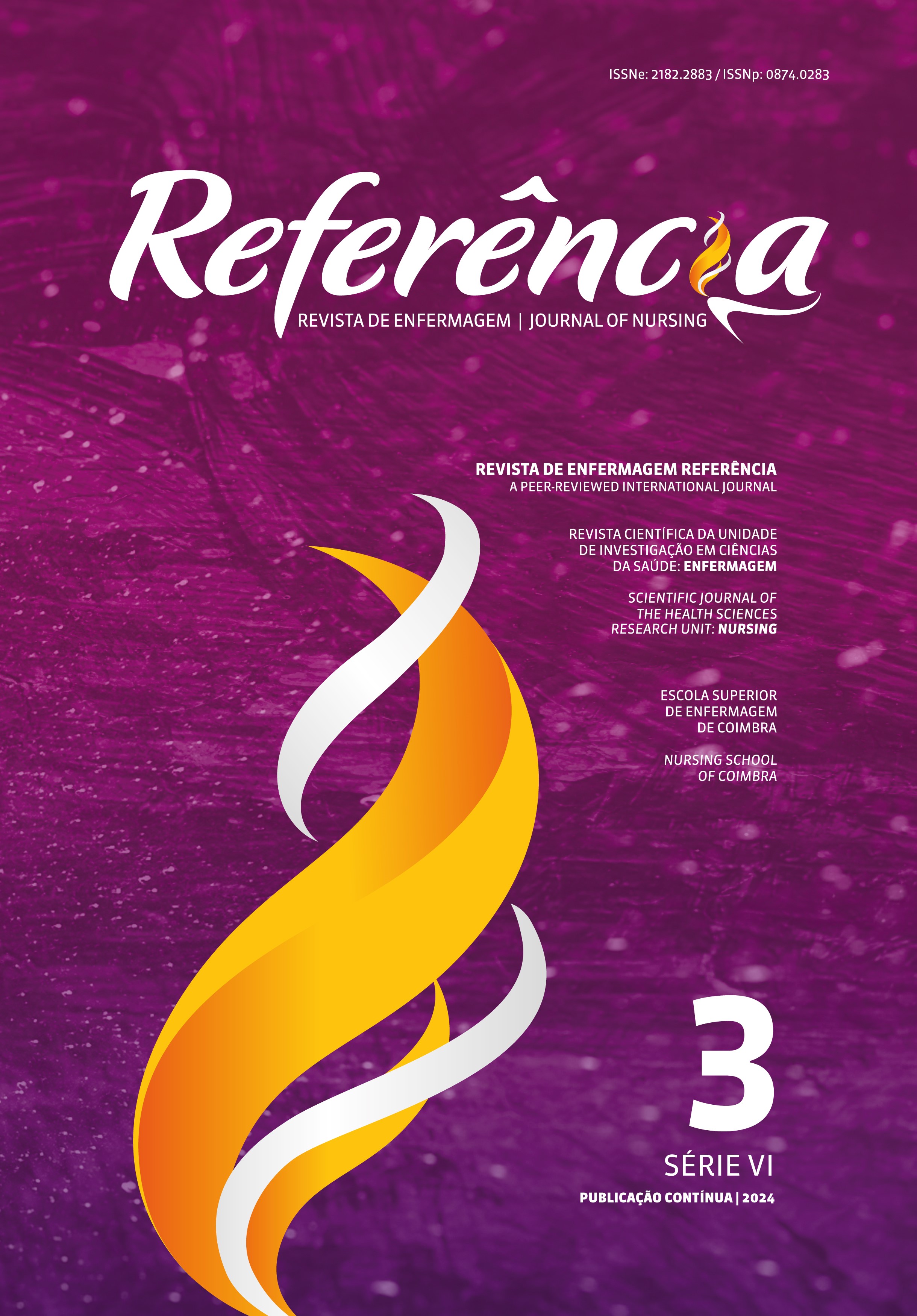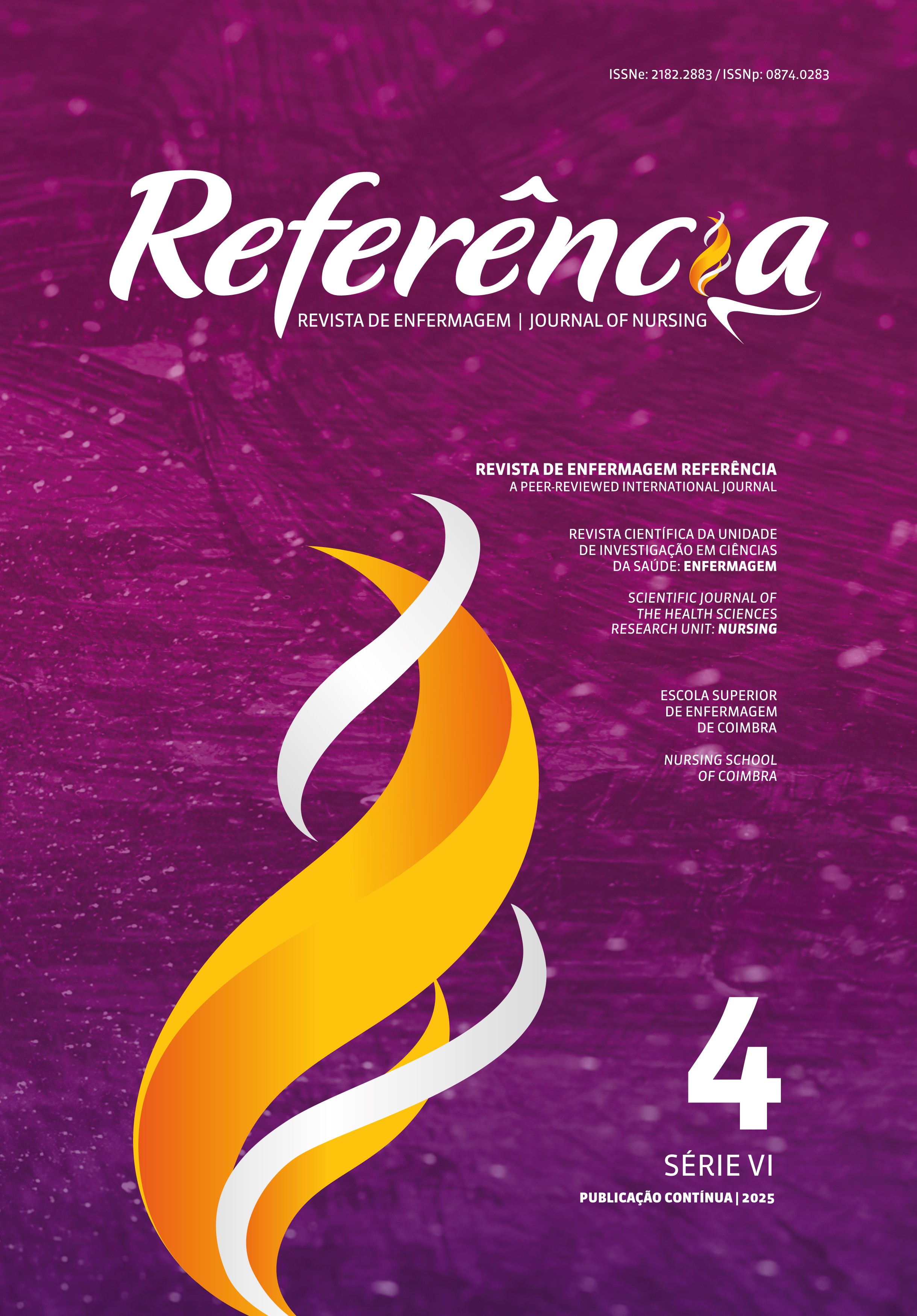Immediate life support to critical patients: Nursing care contributions
DOI:
https://doi.org/10.12707/RVI23.104.32703Keywords:
nurses, prehospital care, nursing care, critical care nursingAbstract
Background: Immediate life support (ILS) ambulances allow nurses to intervene in pre-hospital settings, supported by their technical-scientific knowledge and complex protocols of action and regulation through telemedicine.
Objective: To analyze the contributions of nursing interventions in the evolution of the clinical state of critical patients.
Methodology: Quantitative, descriptive-correlational, retrospective, and observational study conducted in ILS settings in northern Portugal. A total of 574 electronic clinical records were analyzed between 1 November and 31 December 2019, corresponding to the same number of people evaluated.
The National Early Warning Score (NEWS) was used to assess the clinical evolution of critical patients.
Results: There was a positive evolution of the NEWS score of critical patients after the intervention of ILS nurses (M = 4.43 ± 3.901 vs. 3.34 ± 3.329; sig < 0.001). Similarly, the clinical risk of critical patients decreased after the nurse’s intervention.
Conclusion: This study demonstrated the importance of nurses in prehospital care, as a guarantee of safety, quality, and continuous improvement of care for critical patients.
Downloads
References
Arévalo-Buitrago, P., Morales-Cané, I., Luque, E. O., Godino-Rubio, M., Rodríguez-Borrego, M. A., & López-Soto, P. J. (2022). Early detection of risk for clinical deterioration in emergency department patients: Validation of a version of the national early warning score 2 for use in Spain. Emergencias, 34(6), 452-457.
Augusto, O. A. (2015). Identificação do risco de deterioração fisiológicno pré-hospitalar [Dissertação de mestrado]. Instituto Politécnico de Viseu.
Despacho n.º 5561/2014 do Ministério da Saúde. (2014). Diário da República: 2.ª Série, nº 79. https://static.sanchoeassociados.com/DireitoMedicina/Omlegissum/legislacao2014/Abril/Desp_5561_2014.pdf
Hoikka, M., Länkimäki, S., Silfvast, T., & Ala-Kokko, T. I. (2016). Medical priority dispatch codes-comparison with national early warning score. Scandinavian Journal of Trauma, Resuscitation and Emergency Medicine, 24, 142. https://doi.org/10.1186/s13049-016-0336-y
Instituto Nacional de Estatística. (2023). Taxa de variação da população residente (2011-2021) (%) e taxa de variação da população residente (2011-2021) (%). https://censos.ine.pt/xportal/xmain?xpgid=-censos21_populacao&xpid=CENSOS21
Instituto Nacional de Emergência Médica. (2013). SIEM – Sistema Integrado de Emergência Médica.
Ivic, R., Vicente, V., Kurland, L., Svensson, J., Klintemård, R. S., Castrén, M., & Bohm, K. (2022). Pre-hospital emergency nurse specialist’s experiences in caring for patients with non-specifichief complaints in the ambulance: A qualitative interview study.
Internacional Emergency Nursing, 63, 101178. https://doi.org/10.1016/j.ienj.2022.101178
Kauppi, W., Herlitz, J., Karlsson, T., Magnusson, C., Palmér, L., & Axelsson, C. (2020). Pre-hospital predictors of an adverse outcome among patients with dyspnoea as the main symptom assessed by pre-hospital emergency nurses: A retrospective observational study. BMC Emergency Medicine, 20(89). https://doi.org/10.1186/s12873-020-00384-1
Kievlan, D. R., Martin-Gill, C., Kahn, J. M., Callaway, C. W., Yealy, D. M., Angus, D. C., & Seymour, C. W. (2016). External validation of a prehospital risk score for critical illness. Critical Care, 20(255). https://doi.org/10.1186/s13054-016-1408-0
Maciver, M. (2021). Pre-hospital use of early warning scores to improve detection and outcomes of sepsis. British Journal of Community Nursing, 26(3), 122-129. https://doi.org/10.12968/bjcn.2021.26.3.122
Magnusson, C., Herlitz, J., & Axelsson, C. (2020). Pre-hospital triage performance and emergency medical services nurse’s fiel assessment in an unselected patient population attended to by the emergency medical services: A prospective observational study. Scandinavian Journal of Trauma, Resuscitation and Emergency Medicine, 28(81). https://doi.org/10.1186/s13049-020-00766-1
Martín-Rodríguez, F., Castro-Villamor, M., Vegas, C. P., Martín-Conty, J. L., Mayo-Iscar, A., Benito, J. F., Ibañez, P. B., Arnillas-Gómez, P., Escudero-Cuadrillero, C., & López-Izquierdo, R. (2019). Analysis of the early warning score to detect critical or high-risk patients in the prehospital setting. Internal and Emergency Medicine, 14, 581-589. https://doi.org/10.1007/s11739-019-02026-2
Mota, M., Cunha, M., Santos, E., Figueiredo, Â., Silva, M., Campos, R., & Santos, R. M. (2021). Eficácia da intervenção da enfermagem pré-hospitalar na estabilização das vítimas de trauma. Revista de Enfermagem Referência, 5(6), e20114. https://doi.org/10.12707/RV20114
Némedi, N. S., Lóczi, G., Kovács, E., & Zima, E. (2023). A felnott emelt szintu újraélesztés és a postresuscitatiós ellátás újdonságai. Orvosi Hetilap, 164(12), 454-462. https://doi.org/10.1556/650.2023.32725
Olasveengen, T. M., Mancini, M. E., Perkins, G. D., Avis, S., Brooks, S., Castrén, M., Chung, S. P., Considine, J., Couper, K., Escalante, R., Hatanaka, T., Hung, K. K., Kudenchuk, P., Lim, S. H., Nishiyama, C., Ristagno, G., Semeraro, F., Smith, C. M., Smyth, M. A., … Morley, P. T. (2020). Adult basic life support: International consensus on cardiopulmonary resuscitation and emergency cardiovascular care science with treatment recommendations. Resuscitation, 156, A35-A79. https://doi.org/10.1016/j.resuscitation.2020.09.010
Oliveira, A., & Martins, J. (2013). Ser enfermeiro em suporte imediato de vida: Significado das experiências. Revista de Enfermagem Referência, 3(9), 115-124. https://doi.org/https://doi.org/10.12707/RIII1287
Patel, R., Nugawela, M. D., Edwards, H. B., Richards, A., Roux, H. L., Pullyblank, A., & Whiting, P. (2018). Can early warning scores identify deteriorating patients in pre-hospital settings? A systematic review. Resuscitation, 132, 101-111. https://doi.org/10.1016/j.resuscitation.2018.08.028
Perkins, G. D., Graesner, J. T., Semeraro, F., Olasveengen, T., Soar, J., Lott, C., Voorde, P. V., Madar, J., Zideman, D., Mentzelopoulos, S., Bossaert, L., Greif, R., Monsieurs, K., Svavarsdóttir, H., & Nolan, J. P. (2021). European resuscitation council guidelines 2021: Executive summary. Resuscitation, 161, 1-60. https://doi.org/10.1016/j.resuscitation.2021.02.003
Regulamento nº 361/2015 da Ordem dos Enfermeiros. (2015). Diário da República: 2.ª Série, nº 123. https://static.sanchoeassociados.com/DireitoMedicina/Omlegissum/legislacao2015/Junho/Regul_361_2015.pdf
Regulamento nº 367/2015 da Ordem dos Enfermeiros. (2015). Diário da República: 2.ª Série, nº 124. https://www.sep.org.pt/filesuploads/2016/10/sep_Regulamento_Padroes_Qualidade_Cuidaos_Especializados_em_Enfermagem_Saude_Familiar.pdf
Tavares, T. C. (2014). Scores de alerta precoce: Estado da arte e proposta de implementação [Dissertação de mestrado, Universidade da Beira Interior, Ciências da Saúde]. https://ubibliorum.ubi.pt/bitstream/10400.6/4943/1/3357_6732.pdf
Vasconcelos, P., Oliveria, A., Augusto, T., Ladeira, L., Lourenço, J., Barros, F., & Ramos, R. (2019). National early warning score (News) evaluation in an ambulance-nurse: One-year experience in Portugal. BMJ Open, 9(2), A15-A16. https://doi.org/http://dx.doi.org/10.1136/bmjopen-2019-EMS.41
Williams, T. A., Tohira, H., Finn, J., Perkins, G. D., & Ho, K. M. (2016). The ability of early warning scores (EWS) to detect critical illness in the prehospital setting: A systematic review. Resuscitation, 102, 35-43. https://doi.org/10.1016/j.resuscitation.2016.02.011






